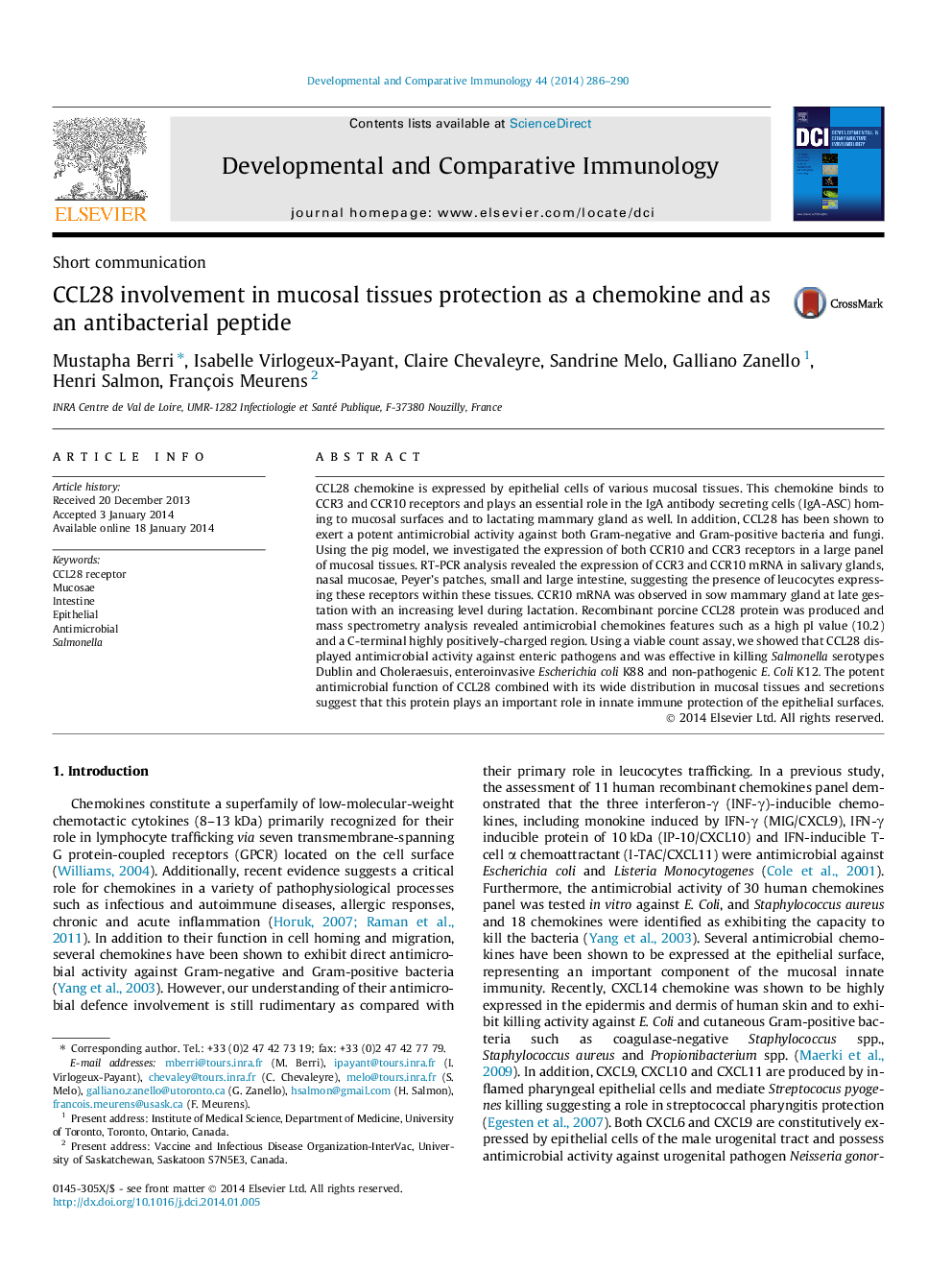| Article ID | Journal | Published Year | Pages | File Type |
|---|---|---|---|---|
| 2429202 | Developmental & Comparative Immunology | 2014 | 5 Pages |
•CCR3 and CCR10 receptors are expressed in pig mucosal tissues.•CCR10 receptor is expressed in sow lactating mammary gland.•CCL28 mediates CCR10+ plasma cells homing in different mucosal compartments.•CCL28 exhibits an antimicrobial activity.
CCL28 chemokine is expressed by epithelial cells of various mucosal tissues. This chemokine binds to CCR3 and CCR10 receptors and plays an essential role in the IgA antibody secreting cells (IgA-ASC) homing to mucosal surfaces and to lactating mammary gland as well. In addition, CCL28 has been shown to exert a potent antimicrobial activity against both Gram-negative and Gram-positive bacteria and fungi. Using the pig model, we investigated the expression of both CCR10 and CCR3 receptors in a large panel of mucosal tissues. RT-PCR analysis revealed the expression of CCR3 and CCR10 mRNA in salivary glands, nasal mucosae, Peyer’s patches, small and large intestine, suggesting the presence of leucocytes expressing these receptors within these tissues. CCR10 mRNA was observed in sow mammary gland at late gestation with an increasing level during lactation. Recombinant porcine CCL28 protein was produced and mass spectrometry analysis revealed antimicrobial chemokines features such as a high pI value (10.2) and a C-terminal highly positively-charged region. Using a viable count assay, we showed that CCL28 displayed antimicrobial activity against enteric pathogens and was effective in killing Salmonella serotypes Dublin and Choleraesuis, enteroinvasive Escherichia coli K88 and non-pathogenic E. Coli K12. The potent antimicrobial function of CCL28 combined with its wide distribution in mucosal tissues and secretions suggest that this protein plays an important role in innate immune protection of the epithelial surfaces.
